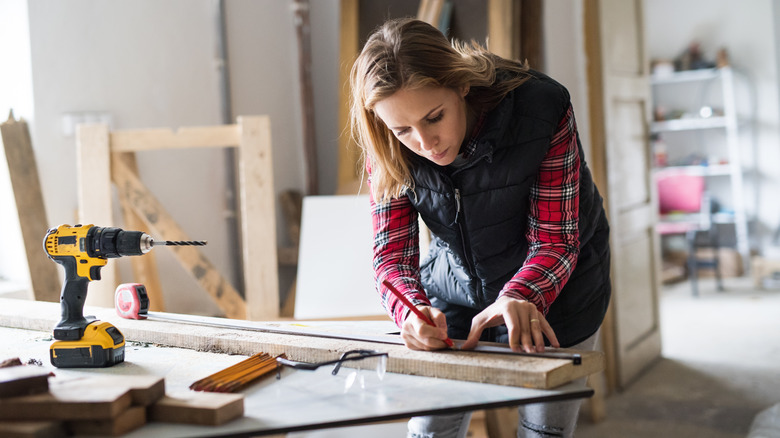The Biggest Mistake You're Making Using A Measuring Tape
Measuring spaces around the home is necessary to ensure that things fit just the way you want them to. Whether you are trying to get measurements for wallpaper, measure square footage, or choose the best place for furniture, you need to make sure the space is just right. Taking accurate measurements can determine whether your new furniture can get in your door at all. However, just because you have a tape measure doesn't mean you are measuring correctly. In fact, the biggest mistake made with a tape measure is neglecting the housing.
The housing of a tape measure is the plastic or metal case it comes in. Not many people pay attention to it other than to clip it to your belt or hold it to roll up or release the tape when measuring. Yet the housing plays an important role in obtaining an accurate measure. The trickiest part of measuring a space accurately is when you have to measure into corners. Many people lay out the tape and when it gets to the other side of a wall, they curl or bend the tape, while holding the housing in their hand and try to eyeball the number in the fold — and it's not exactly a precise method.
How to incorporate the housing into a measurement
Believe it or not, the housing is actually meant to be incorporated into a given measure. Bending it or using a popular hack of clipping a credit card to the end to get a better measurement is faulty and won't be precise. Relying on a fold won't yield exact results, either. Typically the housing of a standard tape measure is roughly about three inches, but you can find the exact measure on the back of the housing. Every housing case should have it clearly displayed.
When you want a wall-to-wall or corner measurement, instead of releasing the tape and bending it when you get to the corner, simply use your housing to fill up the end space. Take note of the measurement on the tape. Then look at the measurement on the back of the housing and add that to the tape measurement. This ensures accuracy which is vital, especially for tight spaces.
